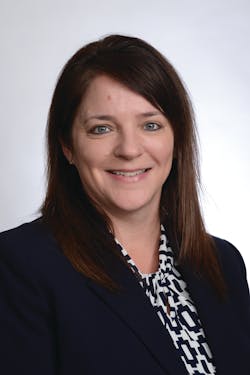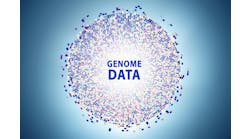The direct-to-consumer genetic testing boom caught most health systems by surprise because their primary care providers felt largely unprepared to discuss the implications of genetic testing with their patients. Now many innovative medical organizations are working to better support their primary care clinics and make genetic testing a routine part of clinical work flow.
In 2014, South Dakota-based Sanford Health made a commitment to broaden its approach to genetics from the rare disease space into primary care with the goal of screening as many patients as possible. That involved a two-pronged effort to create an educational foundation for primary care providers and embed genetic counselors in primary care practices.
Sanford now has 25 genetic counselors embedded in primary care across its health system, which spans North Dakota, South Dakota, Minnesota, Iowa and Nebraska. It also partnered with Augustana University to develop a master’s degree program in genetic counseling. “We have graduated two classes so far, with eight students in each, and we have hired 50 percent of those,” Hajek says.
Sanford is far from alone in seeking to overcome barriers to making primary care settings a bigger part of their genetic testing and consulting efforts. Yet health systems have found doing genetic screening for diseases such as breast cancer in primary care settings difficult due to rapidly changing guidelines, a shortage of genetic counselors, reimbursement issues, and a lack of time and knowledge.
Although some large health systems are starting to embed genetic counselors in primary care, that approach may not be practical for smaller or rural practices. If you are a primary care provider in rural Tennessee, you may see a few patients per year that have a genetics question beyond the scope of your practice, and it may not make sense for your practice structure to have an in-house genetic counselor, says Tricia See, cardiac and neurogenetics team lead for a company called InformedDNA, which provides tele-genetic services such as genetic counseling.
Although the majority of referrals to InformedDNA still come from specialists, See says, an increasing number involve primary care providers. “Some of that is patient-initiated because there has really been a shift in genetics to more direct-to-consumer testing, done outside of the context of physician-ordered tests, so patients are bringing this desire for more genetic engagement to their primary care physicians, and we are getting referrals from them.”
The pace and scope of genetic testing is moving incredibly fast, and primary care providers, because they deal with all areas of medicine, really have a tough time keeping up with it, See says. “I saw a recent study that found that 23 percent of primary care physicians surveyed indicated discomfort discussing genetics with their patients. The comfort level is not there.”
Naresh Agarwal, M.D., regional director of primary care for Peoria, Ill.-based OSF HealthCare, stresses that of all of the U.S. Preventive Task Force recommendations, screening people to identify risk of hereditary cancer is where primary care can have a real and immediate impact.
“The major challenge we have in primary care is figuring out how we integrate this information in a way that we are not adding a burden for physicians in their daily workflow, and at the same time capturing the data needed so we can give an optimal patient experience,” says Agarwal. His organization’s strategy to date has been to identify clinicians with interest and provide training to them to improve their competency in genetics.
OSF also is piloting a tool called CancerIQ in primary care. It started using the platform a few years ago in specialty clinics, including oncology, breast imaging and women’s health. The goal now is to roll it out to primary care practices throughout the system.
Agarwal says CancerIQ’s technology allows clinicians to identify, evaluate and manage patients over time based on individual genetic risk factors within Epic’s workflow. The software’s algorithms analyze family history, run predictive risk models and offer clinical decision support based on oncology evidence-based guidelines.
CancerIQ isn’t the only tool being deployed to help primary care with genetics. A Silicon Valley company called GenomeSmart has developed a genetic risk assessment and test recommendation platform called GenomeBrain, and a population-level dashboard called GenoWatch that offers a clinician a dashboard across a population to identify and prioritize those who may benefit from genetic testing.
A new clinic at UPMC
Mylynda Massart, M.D., Ph.D., an assistant professor of family medicine at UPMC in Pittsburgh, has laid the groundwork to open a primary care clinic focused on precision medicine this fall. She wants it to serve both as a testing ground for new services for patients and a place to educate primary care physicians and pharmacists.
“One of the biggest barriers to the implementation of genomics in healthcare is the lack of knowledge on behalf of primary care doctors. Because we don’t have enough genetic specialists, providing these services is going to fall on primary care,” Massart says. In planning the clinic, Massart is taking a two-pronged approach: “In the long-term, how do we get all of the primary care doctors up to speed and educated, and able to integrate this technology into the routine care of their patients? And how do we have a stopgap that bridges that need until that can happen? It is going to take some time, but the need and want from patients is here and now.”
Massart says increasingly patients are showing up in primary care offices with concerns about results from a direct-to-consumer test, and often the physicians don’t know how to respond and may not be clear on FDA guidelines about what they can and can’t do with those results. “Ten years ago, when I gave talks to primary care doctors on this topic, the response was a complete shutdown. They didn’t want to see it or hear about it. Now I see that changing,” Massart says. “When I teach residents, I tell them to be open. They have trust with patients, who are telling you that this is important to them. Whether the direct-to-consumer test was clinically important or not, it is a great way to jump-start a conversation with the patient to try to understand what motivated them to do the test — whether it was general knowledge-seeking or something particular they are worried about. Use that as a stepping stone to apply the tools we have to answer that question.”
Geisinger’s population health DNA screening
One health system that has been a pioneer in genomics is Pennsylvania-based Geisinger. Its MyCode effort began as a big-data research collaboration with Regeneron in 2014. But the return of results from the research has been made part of normal clinical care, says Christa Martin, Ph.D., associate chief scientific officer for Geisinger and director of its Autism & Developmental Medicine Institute.
A year ago, Geisinger took another step by launching a pilot in two clinics involving a population health DNA screening test looking at about 60 genes that have been shown to be highly actionable. A third clinic is joining the effort soon. Physicians, including primary care doctors, can order the tests. If a test is positive, genetic counselors talk to the primary care doctors about the level of support they would like. “They are quite happy that our genetics team got in touch with the patients to give them initial information, so it sort of ended up mimicking what we did in our research project,” Martin explains. “Then the providers got involved in talking to patients about follow-up. We have integrated a lot of the work we are doing with genomics on a population scale with the primary care providers, which I think is quite different from other places where primary care providers might feel like they don’t have that support team to reach out to.”
The pilots are getting close to 1,000 individuals having received population heath DNA screening. Although Geisinger would eventually like to roll it out systemwide, right now “a big barrier to broad testing like that is cost,” Martin says. “But we hope that if the cost comes down over time, we will have had this initial experience and we will be locked and loaded and ready to roll out bigger initiatives. On this pilot we have worked very closely with our Geisinger Health Plan, which has been very supportive of genetic testing.”
EHR Family Health History Tools
One of the keys to genetic screening efforts is to get good family health history data in the EHR as structured data, although EHRs typically haven’t had good tools for taking family histories. In North Carolina, the Duke Center for Applied Genomics and Precision Medicine created MeTree, a patient-facing web-based family and personal health history collection and clinical decision support program. It collects personal history on diet, exercise, smoking, and clinical data to calculate the Gail, BRCApro, and Framingham scores in addition to personal and family health history on 20 cancers, 14 hereditary cancer and cardiovascular syndromes, and 21 other conditions.
Traditionally patients had to fill out paper forms about their family’s health history. “That is of limited value to physicians,” says Susanne Haga, Ph.D., a professor and researcher in the Duke Center for Applied Genomics and Precision Medicine. “They need something so that the data can be processed with evidence-based guidelines. As soon as the patient completes the MeTree family history intake, the physician gets a list of recommendations based on that information right then and there and can share it with the patient during a visit.”
A pilot study of MeTree in two community-based primary care clinics at Cone Health in Greensboro, N.C., showed that MeTree could be adopted into primary care practices without disruption to workflow, was useful to patients and providers, and found that a high number of primary care patients (44 percent) were at high risk for one of the pilot clinical decision support conditions (breast cancer, ovarian cancer, colon cancer, hereditary cancer syndromes or thrombosis.)
Haga says the use of this type of family health history tool is starting to migrate from major academic medical centers into regional and smaller healthcare systems. “There are multiple benefits,” she adds. “It reduces paperwork and improves input, and does the analysis for the physician.” Primary care should be more of a point person, Haga notes. “Once it is clear that a patient needs to seek care from a specialist or genetic counselor, primary care will facilitate and direct them where they need to go. But we are not there yet.”
Implementing Pharmacogenomics
Hand in hand with efforts to do more genetic screening for conditions such as cancer and heart disease are attempts to implement pharmacogenomics programs in primary care to make sure patients aren’t being adversely impacted by drug-gene interactions.
Researchers have found out the hard way that some medications don’t process the same in all patients’ livers. Looking at the different ways that genetics effect our liver enzymes tells us that our liver might not be able to effectively clear a medication or activate a medication, explains Melissa Murfin, PharmD, associate professor and chair of the Department of Physician Assistant Studies at Elon University in North Carolina. “The implications for primary care are that medications for depression and anxiety, and even for opioid pain relief are all processed by different liver enzymes, and if we could know ahead of time that the patient’s liver works differently, we could choose a different drug or address the dosing, so the patient doesn’t have any problems with it.”
Pharmacists tend to have more knowledge about pharmacogenomics than physicians, but most primary care groups don’t have a pharmacist in house. So how are health systems approaching the issue?
“We developed our own pharmacogenetic testing in house,” says Cassie Hajek with Sanford Health. “We focused on one specific drug, Plavix. I think that was a nice way to do it, because it was less daunting to have a single test. Plavix is one where there is a great story. We know the gene involved in the metabolism of Plavix; we know it doesn’t work great in some people. The ‘so-what’ is that when you use that information pre-emptively and the patient has a catheter and gets a stent placed, they will do a lot better and have fewer complications than when you don’t pre-emptively genotype and change your medication based on that. That is a good cause- and-effect story.”
Since Sanford started with Plavix, it has since expanded and now offers a pre-emptive screen that includes a full 8-gene pharmacogenetic panel. “We put the pharmacists in charge,” Hajek says. “We replicated our health system’s clinical governance and applied it to all the decisions we make in the genomic screening program, and pharmacy is no exception.” A committee looks at all the evidence and whether or not to add new genes to the panel, and that goes through the clinical governance decision-making process. The pharmacists drive that process, review all the pharmacogenetic results and will evaluate the patients on a medication that might be impacted by the results they get back. They review it and reach out to a patient’s physician about how they might use that information. “All pharmacogenetic results are discretely entered in the EHR so we can fire decision support off it,” she adds. If my medical record says I am not going to respond appropriately to Plavix, if my prescriber prescribes Plavix, they get a warning.”
Sanford is not alone in thinking through this work flow. UPMC is expending a lot of effort to develop integrated clinical decision support into the EHR, and that is the gold standard for addressing pharmacogenomics, says UPMC’s Mylynda Massart. “At the point of care for prescribing, a physician can have all the information needed to determine which medication to use for someone’s genomics. That is the ultimate goal, and we have a research project where we are working on that at UPMC.”
Geisinger’s Christa Martin says many health systems are struggling with pharmacogenomics for a couple of reasons: First, most individuals will carry one of those genetic changes that could have a pharmacogenomic effect, so instead of providing genetic counseling to 2 or 3 percent of the population, you are talking about almost the entire patient population having a positive result. Another issue is that although we are getting better at data integration and informatics, people still bounce from health system to health system and their health data doesn’t follow them. “Groups are trying to identify the most common ones or the ones that have the most medical actionability,” she says. “Pharmacogenomics is important, but it is a matter of mechanics and trying to figure out how to get that information into the EHR and use it effectively when patients are prescribed a particular drug.”




